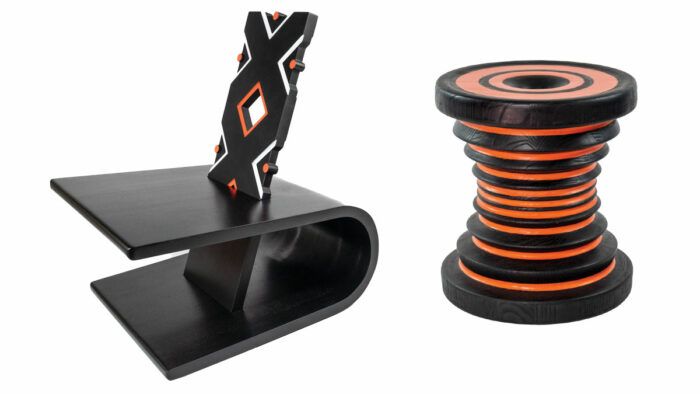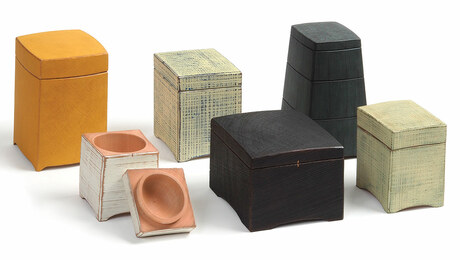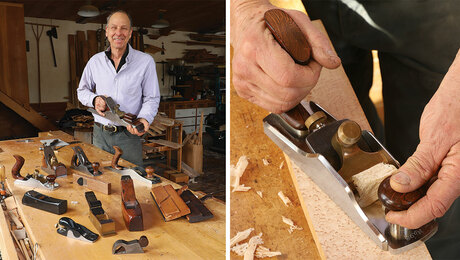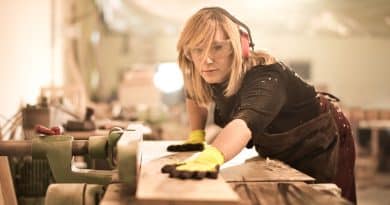Designing the embedded message – FineWoodworking

Synopsis: Jomo Tariku’s Ethiopian heritage informs his furniture design, helping him to create unique seating, among other pieces. Here, he shows six of his stools and chairs and explains the origins of their designs.
For me, designing furniture involves a fair amount of research. A lot of looking, that is. In museums, but largely in books; books and a sketch pad are my favorite research tools. I tend not to go on the computer, because I’ll too easily wind up in a rabbit hole. I make thumbnail sketches of anything that strikes me. Just silhouette sketches; I don’t get carried away with the details. The things I draw don’t have to be related to furniture at all. I’m just looking for things that make me think, “Hunh, that’s interesting.” It could be a shape or a pattern or a texture or a color, a hairstyle, a piece of pottery, a detail of a building.
Most of the time I’m not at all sure what I might want to do with one of these ideas; putting it in my idea sketchpad is just saying it’s worth reviewing in a week, two months, a year down the line. I really like this approach, where I’m a little bit divorced from the idea that this will be a piece of furniture. I really want my work to stand out, and I think this approach gives me a leg up when it comes to creating unique pieces. If I had just been looking at Mid-Century furniture all day, I’m afraid what you’re going to get out of me is just a slightly different Mid-Century piece.
I was raised in Ethiopia, and I focus my research on objects of African culture and elements of the African environment. I try to encourage other designers, especially those with an African background, to use their heritage as part of their design vocabulary. A rich heritage is a powerful thing, and I use mine as a launch pad. It helps me create unique things. All my work has that message embedded in it.
The high-end furniture market is very exclusive, and design has been codified as something Western. You can’t say design is a global language while omitting the global south. Very little of Africa or African American culture is reflected in it. Changing that aspect of the industry has always been part of my goal.
Meedo Chair
I sketched this piece again and again as it went through many transitions on paper and in 3D models. I knew it would be expensive to build, and in a way I’m happy I wasn’t able to make it sooner, because I really like this last version.
In my very first sketch I had a face on the back rest. I had been looking at traditional African combs with faces carved on the handle, and that first sketch was a kind of literal interpretation. That’s something I usually try to avoid—taking what I see and turning it directly into furniture. Instead, through multiple iterations, I try to see what I can come up with where the central theme remains, but the form progressively changes, reinterpreted into something very modern, for our time.
There’s another layer of meaning in the piece, because in America in the 1970s the Afro pick became a symbol of Black beauty. After combing their Afro, people here would leave the comb in their hair; it was a symbol of defiance. Kind of, “It’s OK to keep my hair natural, the way it should be, if I want to.”
Even though I was a very young man in Ethiopia at that time, I got this message through my uncles, who were influenced by watching American movies with Black actors like Richard Roundtree, Jim Brown, and Jim Kelly, who had a huge Afro along with bell bottoms and elevator shoes. So to me the comb had all these themes embedded in it.
Like most of my chairs, the first Meedo was made by David Bohnhoff in Columbia, Va. It was commissioned for the Afro-Futurist period room at the Metropolitan Museum of Art. It’s made from 16 layers of walnut veneer bent laminated in a mold extracted from the 3D design.
 |
 |
Boraatii
The shape of this adjustable stool was derived from the silhouette of a tribal headrest, or boraatii, found in Ethiopia. There are many many different headrest shapes and designs throughout Africa. Various tribes—mostly of nomads or herdsmen driving camels or cattle—still use them. Some of the men have very intricate hairstyles, and when they rest they don’t want them squashed. That’s where the headrest comes in handy.
I looked at the shape of one of these and said, I could easily scale this up and call it a day. But I generally try to avoid doing that. I try not to take the easy route, unfortunately. The height adjustability would let you use it as a stool, or a footrest, or an end table, and would work for people of different sizes.
Mukecha
A traditional African mortar for grinding grain, a mukecha, inspired the overall shape of this stool. The mukecha is usually used by women, and grain grinding is a communal activity. I put a hole in the middle of the seat to suggest the concept of the mortar.
But the piece is a fusion of two ideas. The outline of the traditional mortar is not as intricate as mine. Instead of simplifying things as I typically do, I went in the opposite direction, adding ribs all the way up. The ribs are inspired by the neck-extending rings that you can find among Dogon people in Mali and Nigeria.
From the very first version we did, the rings were drawn freehand while the stool was on the lathe. The paint is orange acrylic marker—made for drawing on sneakers. The black is a stain.
 Mequamya
Mequamya
A prayer staff used by deacons and priests in the Ethiopian Orthodox Church inspired the shape of the back of this chair. In their processions they spend many hours standing and chanting, and the prayer staff provides some support. You can rest your arm on the staff; you can lean against it.
I call this my stealth chair because it has so many different planes. The legs are six-sided; the back rest has seven sides. Again, it’s not the easiest thing to make, because it’s got so many angles, but I think that’s what makes it interesting to look at from different directions.
 E’nsera
E’nsera
This stool is based on a clay water jug, or e’nsera, that is used in Ethiopia and throughout Africa. Women, mostly, will carry water in one of these from a river or other water source. It’s back-breaking work. I grew up watching people do this. This is the inspiration behind this piece.
Where I grew up everybody had these clay jugs in their kitchen, either for brewing local beer, or to store water and keep it cool overnight.
The first version of this stool was made from turned plywood. I used my CNC to make circular cutouts in a stack of pieces, then glued up the stack and my woodturner, David Sterling, shaped the outside. The more recent ones are made of solid ash.
 |
 |
Qwanta Totem Chair
This piece is based on a traditional Ethiopian birthing chair called a qwanta, which is composed of two diagonal planks; one slides through a slot in the other and can be pulled out to disassemble the chair.
My piece combines a redefinition of the traditional birthing chair with spare back rests inspired by totems. Totems have significant storytelling and religious meanings in various cultures. My thinking was to see if I could create a chair where the back rest is swappable, and when you take one out, it can be displayed on the wall as a sculptural piece, like a totem.
The back with brass hemispheres was inspired by the traditional mud mosques in Timbuktu, Mali, that have the ends of timbers sticking out of the walls, creating an amazing-looking pattern.
 |
 |
Jomo Tariku, who lives in Springfield, Va., designs, builds, and collaborates on his furniture with other craftsmen. You can dig deeper into his work at jomofurniture.com.
From Fine Woodworking #303
Sign up for eletters today and get the latest techniques and how-to from Fine Woodworking, plus special offers.











